Interview Judith A. Torres
Images Turenscape, Chapman Taylor, and Arcadis
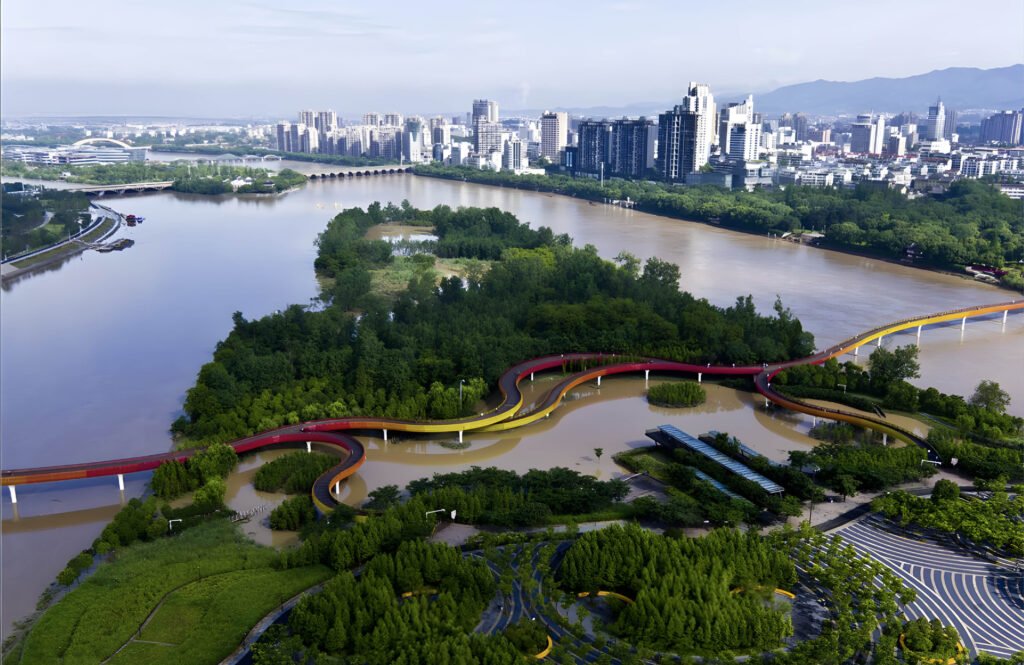


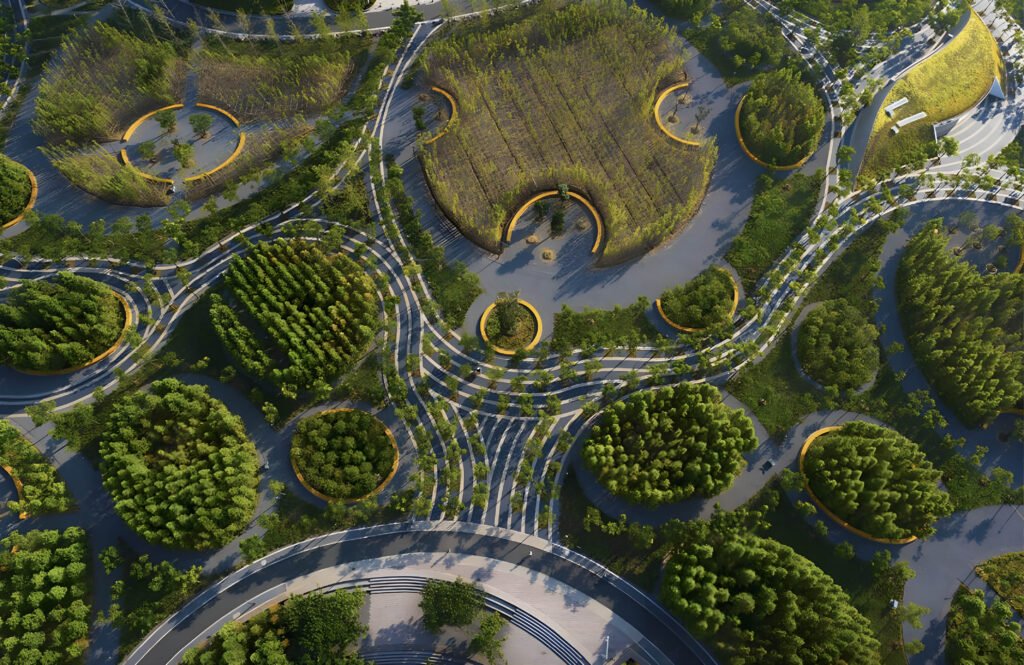
Arcadis is retrofitting cities with water, allowing the cities to flood in order to become more flood resilient. It sounds counter-intuitive, but in a time when nature is becoming more volatile, one must work with it and not against it. That is the premise of nature-based solutions, (sometimes called blue, green, or green-gray infrastructure). Let the flood gates open? No. How about doing away with flood gates altogether?
The global design consultancy, founded in the Netherlands, provided technical, policy, and program advisory to Wuhan Water Authority on the three years of Wuhan’s Sponge City pilot program. Sponge City is the Chinese government’s program to reduce the risk of flooding and water-related problems within 30 major cities.
Instead of employing the more traditional ways to inhibit floods—dikes, break walls, barriers, and pumps, Sponge City concepts welcome water to certain parts of the city. These floodable zones, usually parks and open spaces, perform multiple ecological functions: mitigate heat, recharge groundwater, increase biodiversity and more. If more cities, old and new, adopt these low-impact interventions, imagine how lush and pleasant our urban environments will be.
Ross Mckenzie, Arcadis Head of South-East Asia & India, gives us a picture: “Hundreds of individual projects that form part of an ecosystem—permeable pavements, rain gardens, grass swales—soak up the water, filter it, and store it. Then, when the river is low enough, they discard it into waterways to be used. It’s like bringing the concrete jungle back into the natural water cycle.”
He adds that Metro Manila should already utilize the potentials of Pasig River, Laguna Lake, and Manila Bay, subjects of numerous past studies from public and private sector as well as the academe. “When you have rapid development, you always end up behind and trying to play catch up. And in these circumstances, innovation really suffers. As a result, operators and governments become reactive rather than proactive.”
Another critical point of intervention for Mckenzie is reducing leaks in our water systems, also known as non-revenue water (NRW), the water that does not get paid for because it never reaches consumers. In Metro Manila, NRW can be as much as 30 percent.
Utility providers have a lot of aging infrastructure to upgrade. This does not have to be the case for household water systems. There is already technology available for home and business owners to make sure leaks are immediately addressed and wastage reduced. For example, the GROHE Sense Guard water system detects any leak in your piping or plumbing system, whether it is minor or major, and sends alerts to your mobile phone on excessive water usage. Smarter water systems can start at home, informing us of our own consumption habits so we can re-calibrate our lifestyles and educate succeeding generations.
Judith Torres: Tell me about the water innovations Arcadis is advocating.
Ross McKenzie: Nature-based solutions. As urban areas expand, the amount of permeable land reduces, increasing flooding events, pollution, and ultimately the quantity and quality of water supply. So Arcadis has been advocating nature-based solutions as they offer a more sustainable, adaptable, and affordable way to achieve climate and flood resilience. They also have benefits that support the UN Sustainable Development Goals. They redevelop the natural water cycle process, reduce the peak flows, allow the water to be naturally retained, reduce the flooding risk, and provide a water source during the dry seasons. Kind of like the natural cycle coming back. The ground filtration filters that water.
Where have you done this successfully?
We’ve been involved in these globally. An example is the Sponge City Initiative in Wuhan, China. Hundreds of individual projects that form part of an ecosystem—permeable pavements, rain gardens, grass swales—soak up the water, filter it, and store it. Then, when the river is low enough, they discard it into waterways to be used. It’s like bringing the concrete jungle back into the natural water cycle.
How would it work in Manila, for example, where there are so few permeable surfaces left.
It’s about changing exactly that. Like Pasig River, for example, it is dirty. The opportunity to turn it into something different and create a way of soaking up water. In vertical buildings, you can put grass and natural elements on them. Not a lot of buildings do that—bring plant life to the vertical world. That soaks up water as well.
Arcadis advocating this means you tell developers they should adopt these practices?
That’s right. We work with them as well. There are experts within our business that provide guidance and support, then we, as an engineering consultancy, support the development of this. First, we advocate this as a good solution. Then we can guide them through the process and provide expertise on how to do it.




Does that work after the developer, for example, already has had the plans designed? Can Arcadis come in midway? Or must you be part of the equation before the property is planned and designed?
We can come in any time, but earlier is better. If you make these solutions an add-on to something else, it will not be as good as if it were holistically designed as part of the overall plan, and is more cost-effective. But it can be a retrofit of existing places because many cities have already developed and are already concrete, but these are things you can still do. Nature already existed here before, but we removed the nature, and now it is about bringing it back.
So what we do is bring sustainability in everything we do, but it all depends on the scope we are engaged for and the timing we have come on. But we can always do something. Of course, not everyone wants to do it either, but we need to have the skills to convince them and share the knowledge and might inspire someone that’s the way to go. Sometimes, someone will approach us saying they have an amazing plan and concept, and we love to work with those clients. But that’s not always the case.
What are some of the inhibitors to these exciting water innovations, and how do you deal with them?
Rapid population growth and urbanization are a challenge, not just in the Philippines but elsewhere as well. When you have rapid development, you always end up behind and trying to play catch up. And in these circumstances, innovation really suffers. As a result, operators and governments become reactive rather than proactive.
With such a long period of underinvestment in the Philippines, there is a lot to fix. The other thing I noticed in the Philippines is the privatization of key water infrastructure. It’s an inhibitor to innovation because innovation often requires a long-term view, spending more upfront to be more efficient long term. And these private companies have a shorter window of operating time, so it is less likely that they will invest.
The government can take a developer-view of planning, particularly when it comes to water management, flooding, and water contamination. But, on the other hand, the water supply operators can be incentivized to reduce waste through smart technology and innovate more.
It’s not all bad. I think there are some sustainable innovations. One example will be the Manila Bay Sustainable Development Master Plan. This was done as a collaboration between a few Dutch companies and NEDA. It looked at the impact of surges on Manila Bay, sea level rising and provided a robust plan to ensure that the groundwater is managed and mitigate the flooding, among many other things. Of course, there’s still a lot more to do there, but at least, it is good to see that clear plan.


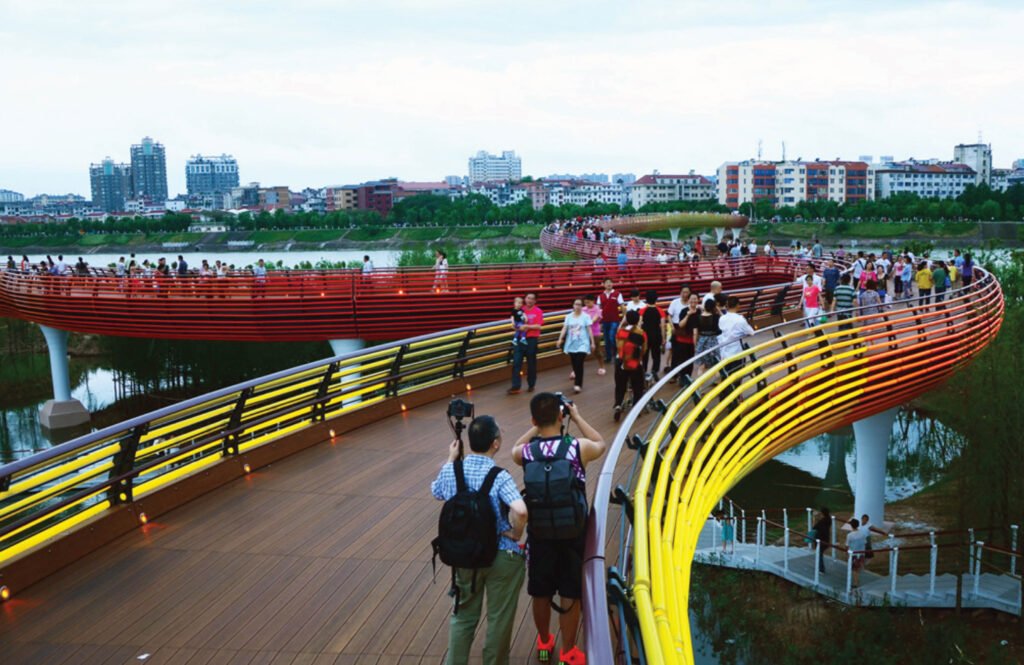

What should we be most concerned about regarding drought resilience and conservation here in the Philippines?
I look at this practically and as an engineer. I think deforestation is a key problem you need to address, and the government has a role to play in that. The Philippines is one of the most deforested countries globally, and it has all happened in the last forty years driven by mining, agriculture, logging, and population growth.
Water needs to be soaked up by the ground, which needs trees, and not run over the cities before it meets the sea. Without the forest, we don’t get the natural transpiration of water. When it rains, it needs to reach natural reservoirs. If it runs across the land, it gets polluted, and it becomes pretty difficult to treat. Laguna Lake is a good example. With the non-stop pollution, it might be cross-prohibitive to retreat and use them.
Deforestation is not something individual groups can solve.
Legislation and plans can—like reforestation programs. There’s also a lot more corporate conscience right now with people trying to offset carbon emissions and things like that. It allows the forest to be grown and provides the funding for it.
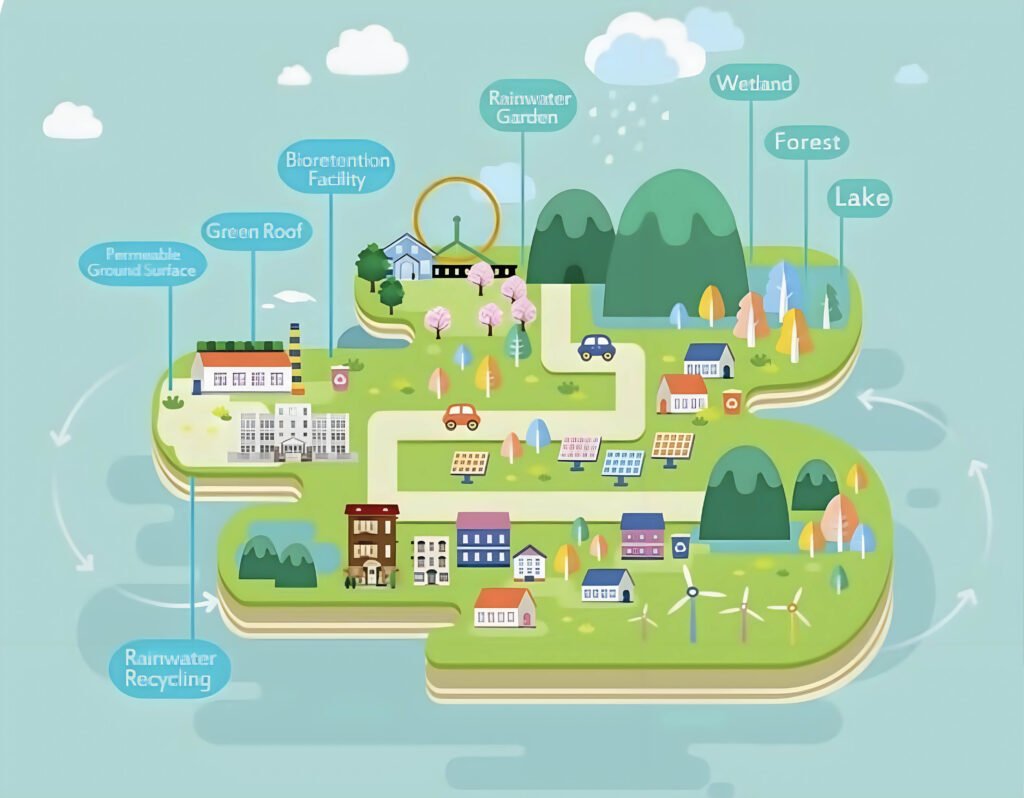

Has Arcadis worked with governments on their long-term plans?
We do in some countries, but in the Philippines, not so much. We have worked more with private developers and the private sector. We do work a lot more in the water space but are separate from the government. Indirectly, we go through green building councils and the Dutch embassy supporting NEDA.
Who are the biggest consumers of water? And biggest causes of water shortage in the country?
Raw water consumption is around agriculture—about 80 percent. But looking at potable water, like in Metro Manila, it’s households and businesses—maybe 55 percent of total water consumption.
Two ways that I see water not being used wisely: one is non-revenue water, which is around leakage, water that is treated and comes out of the plant but does not make it to the consumer. This can be as much as 30 percent in Metro Manila. So only two-thirds of water makes it to consumers. Again, that comes down to aging infrastructure, the distance it has to travel, and how it is transported.
The second is water pollution, so as you get more industrial buildings and agricultural lands, water run-off gets polluted and ends up in catchments. These become as uneconomical to treat and are lost as water fit for human consumption. We did a study years back on the treatability of Laguna Lake, and technically there are ways to treat the water. Still, it really isn’t viable for anyone to take that action at cost-benefit, at least for now with the current water crisis and demand. Maybe in the future, technology might change. It’s so sad to see such a large body of water become unusable.
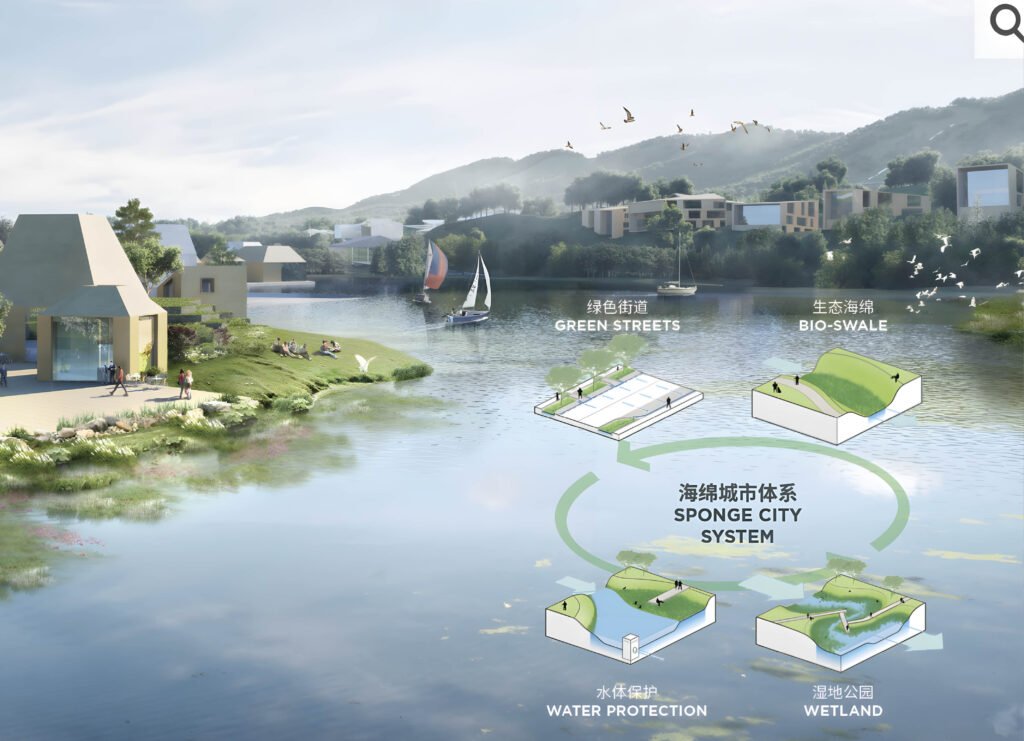

What has made it so unfit for people and too expensive to treat?
Just water running across grounds surface unfiltered. The forested areas are no longer there, so when water runs across land, through fields and towns, industrial areas, it becomes dirty. And as it flows into the water body, it pollutes. And over time, the concentration of pollution becomes stronger. We can’t drink that as humans. It needs to be treated and cleaned, but the expense of the filters and technology becomes expensive. So the purchase price for the consumer will be too high. So you would have to look at other alternatives like desalination, which sometimes is cheaper than fixing the dirty bodies of freshwater.
Who did you do the study for?
One of the water concessionaires in Manila. Metro Manila, for a long time, has had a shortage of water. Most of its water comes from Angat Dam, which was built some years ago across a fault line—so it is vulnerable—and it is also not enough to support the population growth. And its aqueducts are aging, so there’s been some work done in looking for alternative water sources, like the Kaliwa Dam; pleasing to some and not to others, but from a water supply perspective, it is great to see an alternative source. Another is Wawa. You’ve gone through a long period of under-investment and a lot to catch up on.
One of the directors I have worked with has probably spent his entire career talking about Kaliwa Dam. It’s not a new concept. It has been around for a long time, but no one has taken steps. Unfortunately, sometimes it takes a water shortage to spur action.
Any other options?
We have done some studies on the east side of Laguna Lake, which is less polluted, but the challenge is the long conveyance to Metro Manila. It takes many years, about five to seven years, to build these assets, so we’re still a long way off, but work has started.
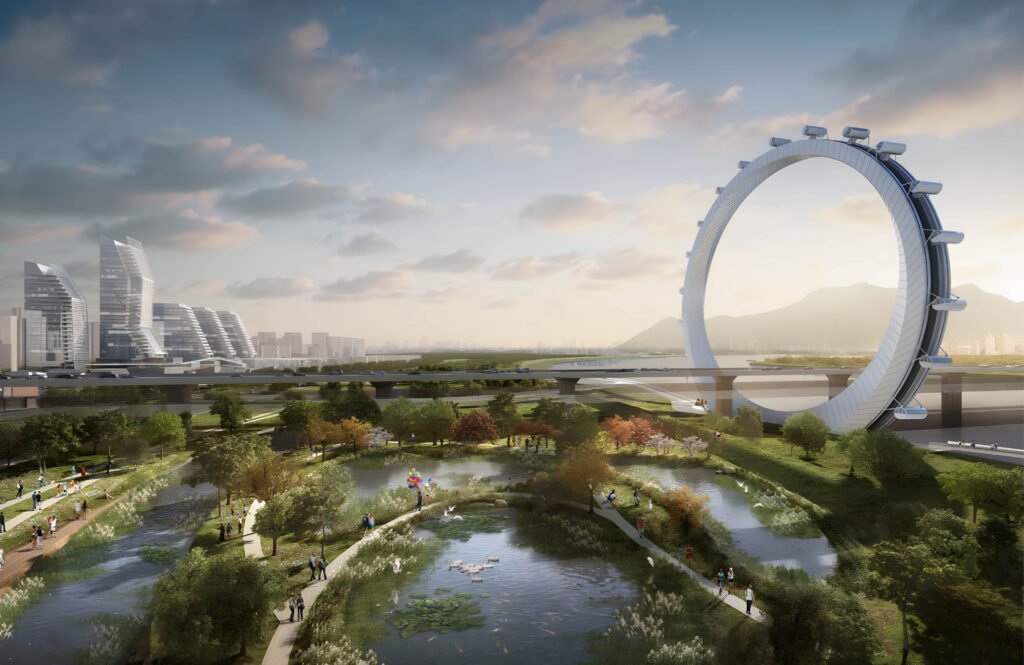

What are the issues around agriculture, which consumes 80 percent of our raw water? Is it a matter of being much more efficient in the way we irrigate?
That’s one reason. But another is that we remove forests to get agricultural land, which causes pollutants to reach our water sources. Water from run-off and even rain can no longer be used because of the pollutants. There are sustainable ways of farming. It’s more about thinking thoroughly about what we do with the land, around fertilizers and the treatment and maintaining forests. If you can put water through a natural filtration system like soil, it goes into the ground, is absorbed by trees, and is naturally cleaned. But you need to be careful what you put on the land, don’t put toxic chemicals. There are some excellent sustainable farming examples globally, but it is not necessarily the cheapest, and it is often complex.
What’s the primary problem with our biggest wasters of water?
One of the biggest wasters is non-revenue water, the water that never makes it to consumers. Most of the loss is caused by leakage through pipe bursts that you don’t know about for weeks.
How much of a difference then does LEED make in water conservation and efficiency? It’s been in the Philippines for a decade now.
We worked on one of the first LEED projects here in Manila over a decade ago, the Zuellig, a high-class LEED Platinum building. Unfortunately, LEED is voluntary, right? So for us, it’s still a small proportion of projects we work on that are LEED certified. But the good news is that kind of certification pushed the Philippine government to have their own Philippine Green Building Code. So even the PhilGBC requires higher-performing water fixtures to be installed, which is also part of LEED. So technically, they should be across all buildings. These can provide savings of about 20 percent in comparison to more traditional buildings.
With LEED, though, there are more opportunities as they require even higher performing water fittings, which can provide up to 30 percent savings. And there are other less traditional areas like graywater recycling options that can reduce consumption by 50 percent or even more. The good news is that it clearly works. If 50 percent of the water in our buildings can be used this way, there’s a fairly big saving there. What we really need is more buildings that adopt these.
The challenge now is incentive because LEED is voluntary. Every measure around water has a poor payback on the cost of installation and maintenance. The price of water in the Philippines is relatively low, so the savings you get does not pay for itself, unlike energy, where electricity in the Philippines is expensive and makes the investment worthwhile.
So, the technology is already there, but it’s now about incentivizing behavior, making people take the longer view.
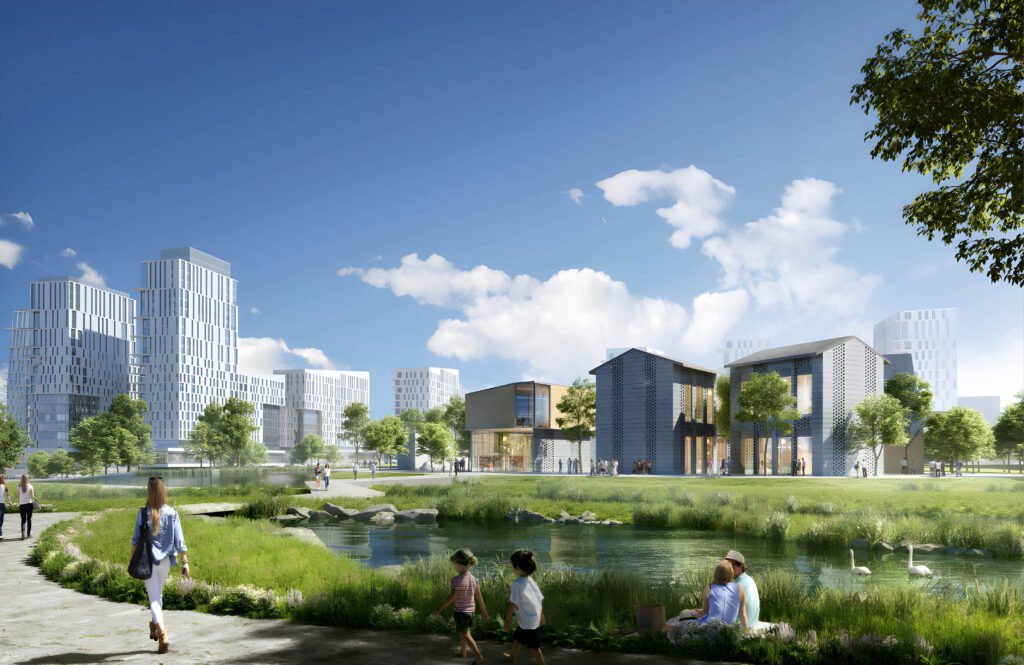

Sounds like we have a tough road ahead.
We can do nothing to incentivize water-saving business-wise, but we can support water efficiency and conservation through knowledge. We can share the best practice and benefits. Since most of our clients are private developers, unless it makes commercial sense, LEED, as an example, appeals to tenants who might pay more for their space, so that works.
But some things like gray water recycling are not a requirement for LEED, so you can still get certification without possessing it. It makes sense that any developer will want to get the best benefit from LEED at the least cost. They’ve got to find the returns. Energy is a no-brainer for everyone, but in the water space, it’s more challenging.
But there are two sides to that, water is essential for people to live, so you don’t want to make it inaccessible. But if the price is not reasonable, it does not make sense as an investment. So some governments in other countries provide tax incentives for doing the right thing. Or you have legislation like the Green Building Act that requires the behavior.
What water technologies intended for good turn out not to be efficient at all?
Bottled water. We have a lot of types of purified water here, right? So, 60 to 70 percent of the water that goes into a facility to make bottled water is wasted. Only 30 percent makes it into the bottles. That is quite a havoc in the Philippines. So, for the 600 milliliters of water you are drinking, three liters of water are used. It’s wasteful!
And yet, the water supply in places like Metro Manila is actually reasonably clean and drinkable. And you can actually use something like UV light and filtration, and it gives you just as clean water and produces zero waste.


Does Arcadis tell developers to provide potable water from the tap?
In this case, it’s not our job to. But we walk the talk. A few years ago, we did have bottled water in our offices. Everyone who comes in for a meeting is given a bottle. We don’t now. Instead, we have filter systems and glasses which are reusable. We fixed up ourselves and spoke about the reason we have done that, leading by example.
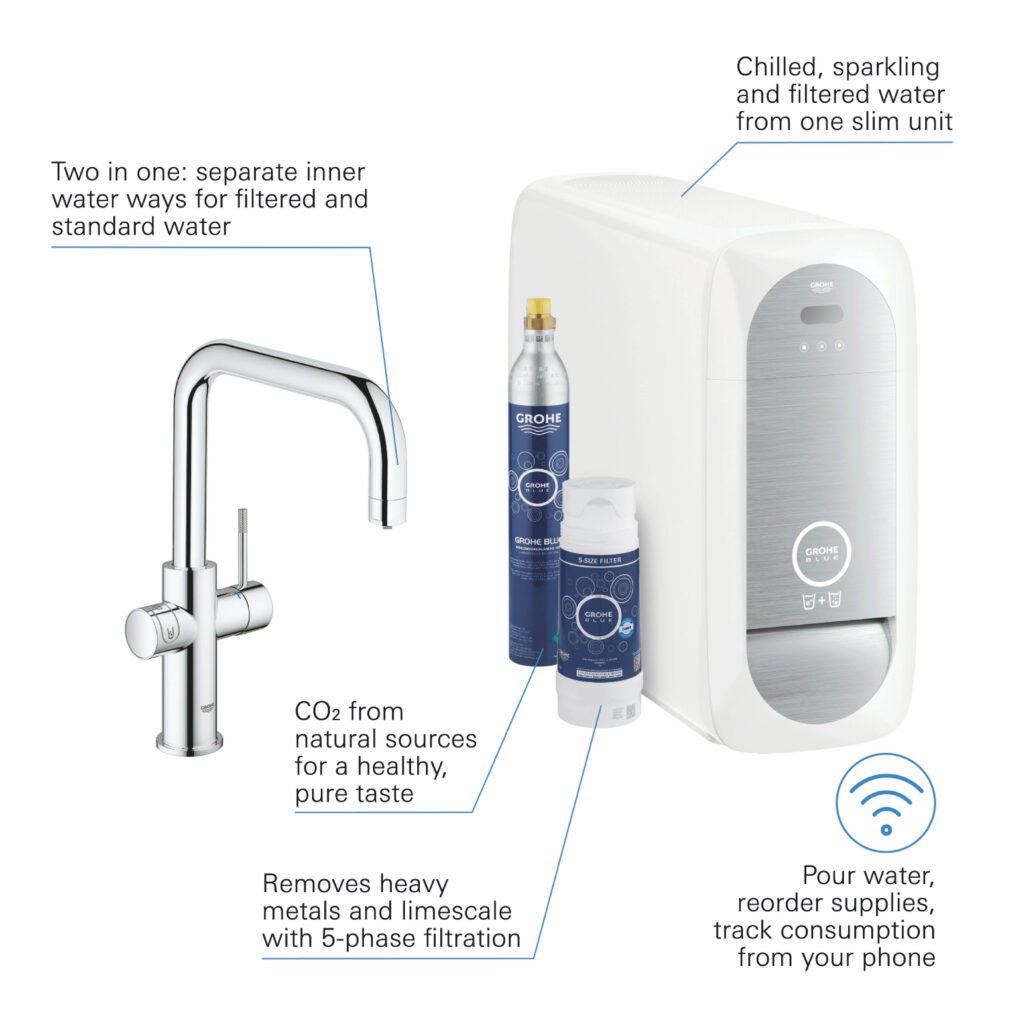

The best packaging for water? No packaging at all.
Watch:
GROHE Blue offers filtered, chilled, still or sparkling water from the tap.
GROHE Red provides filtered, boiling-hot water from the faucet.
Could LEED be even more stringent with water efficiency? So whatever standard LEED puts out, is that the most efficient already?
LEED has the framework to be efficient, and there are levels—certified, silver, gold, platinum. The further you go up, the more points are required. So, there are mandatory aspects of LEED, and high-performing fixtures are part of that, but you can go above that minimum and earn more points to go up the ladder. Like installing gray water recycling and other technologies as well to achieve even higher efficiency. But this is entirely voluntary.
But, for me, that’s not the first thing I would do because I think someone is undertaking LEED certification is already a good step, and we should incentivize that behavior. The lower-hanging fruit here is to get everyone to do it and follow a system like that, making sure that the Green Building Act is being followed. That, to me, is the first step.
Once everyone is on it, then you can take that further. So, asking manufacturers to develop more efficient systems, reuse systems, lower maintenance costs, all of these will follow, but we need to get the mass behind it.
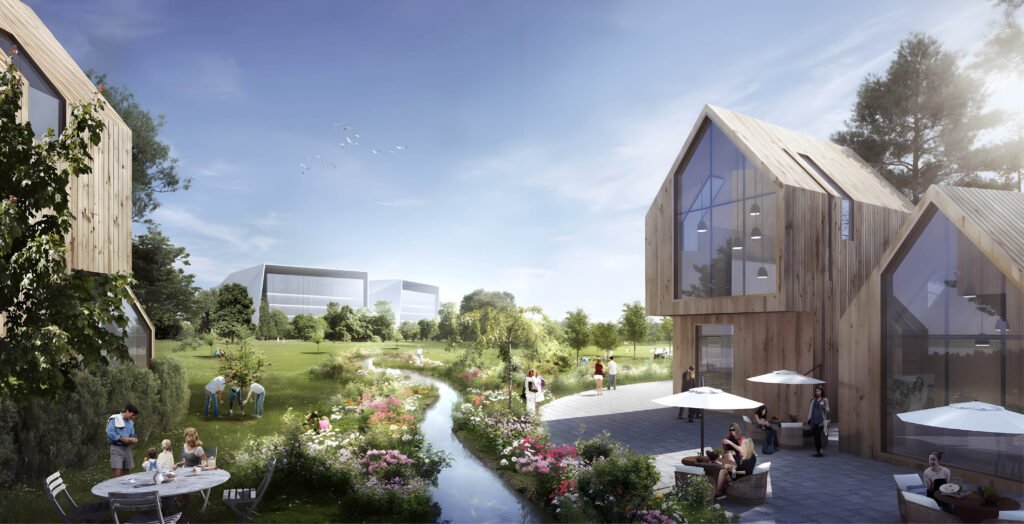

I’ve been to developments where they seem to be outdoing LEED by saving more than is required, which sounds like a good thing. But it’s ridiculous when the low setting requires customers to flush more than once.
I know what you mean. You can overdo it and compromise on performance. There are always lessons learned and examples where we’ve gone too far. But unless you push the boundaries, you will not know whether you’ve gone too far. So I don’t think there’s a compromise on this. I also don’t think there’s a need to go that far—I mean, if you’re trying to get another 10 percent savings out of your toilet flush. I just explained that 30 percent is lost even before it can get to the buildings. Shouldn’t we start there?
Are LEED and WELL competitors? Or do they complement?
They are complementary, in my view. Essentially one is the sustainability of the building, and the other one is the wellness of the occupants. So if you do both, which some buildings do, you can end up with some credits you can cross over, but you can expect to have a LEED building, and it’s automatically a WELL building. So the two work together really well.
How did it work in your experience with Menarco Tower?
It started out as a LEED building, and sometime in the middle, WELL was introduced. Credit to Carmen (Jimenez-Ong) and the team. She really wanted to make it happen. But, in fairness, she was doing a lot of the things anyway—she had gymnasiums, really good spaces, the tech for clean air. So it was just a case of bringing in the certification to give a stamp of approval.
Our role was to catch up to that. And it was a learning curve for us all because nothing like it was done in the Philippines before. But the organizations behind it were so supportive and wanted to see it successful.
It’s a shining example of what we can do with buildings. If we can see every building like that, then it can be significant. I have no doubt that it will also work from a commercial perspective because they will get their returns. It’s an absolute pleasure to be in it.
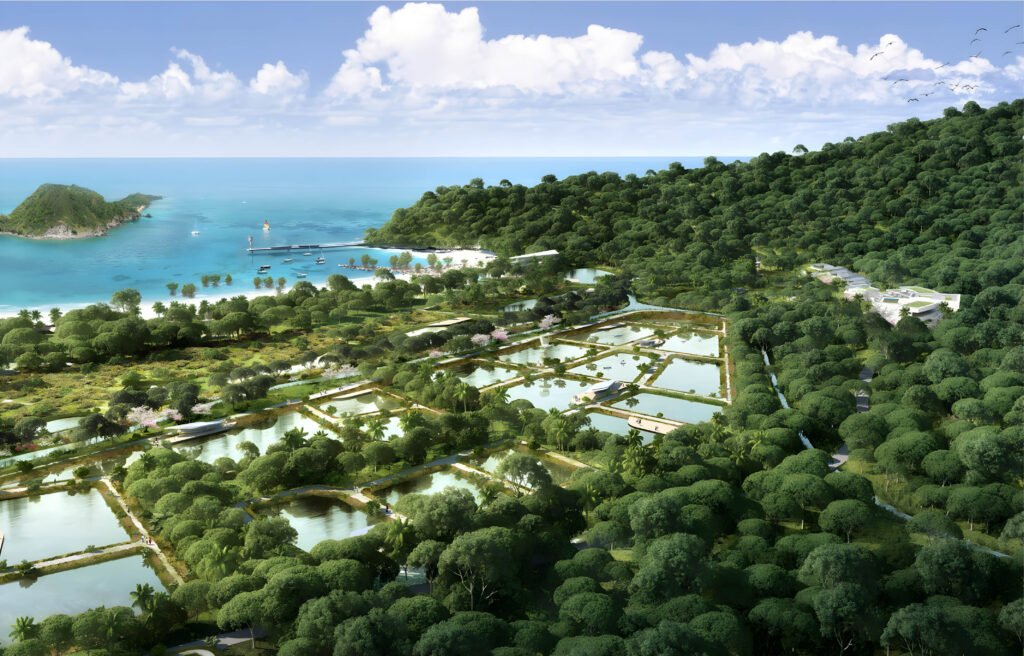

We will be facing worse water crises in the years to come. Do you see opportunities here for developers, communities, and consultants in the face of that threat?
The good news is there is a lot we can do. Another is there is a generation out there driving change in corporate consciousness, and they are in corporations, including our own, taking stuff seriously and driving change. Millennials are getting into positions where they can make things happen. The thing about change is that it accelerates and can be exponential.
One thing I would love to see in the Philippines, and I feel will make a big difference, is smart technology. We see this in various water networks around the world. So you can imagine running your water network with fewer losses and more reliability, knowing where the problems are even before they happen, knowing when a pipe is about to burst, and fixing it first. This is already happening.
Another thing I learned from my stay in the Philippines. There’s a lot of things around the world that are pushing boundaries. You don’t have to reinvent the wheel in the Philippines. You just have to take global best practices, put a Filipino spin on it, and bring it to market. With everyone connected all around the world, you can do that. So that’s where we want to work. •
Save our water! Watch these interviews: Water Like Gold, Carmen Jimenez-Ong of Menarco Development and Chut Cherva of NOVA Group; Water for Wellness, Jack Noonan, International WELL Building Institute Vice President for Asia Pacific; Floodgates Open, Ross McKenzie, Arcadis Head of South-East Asia and India

